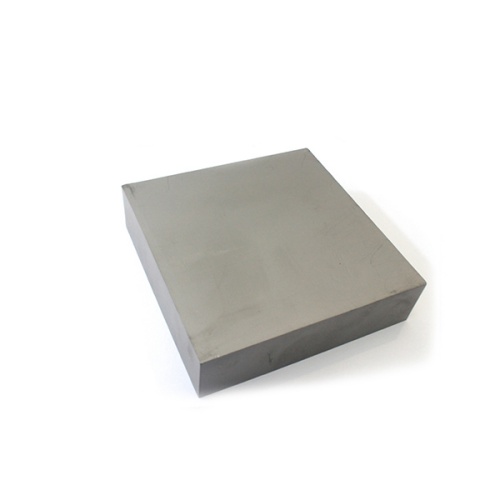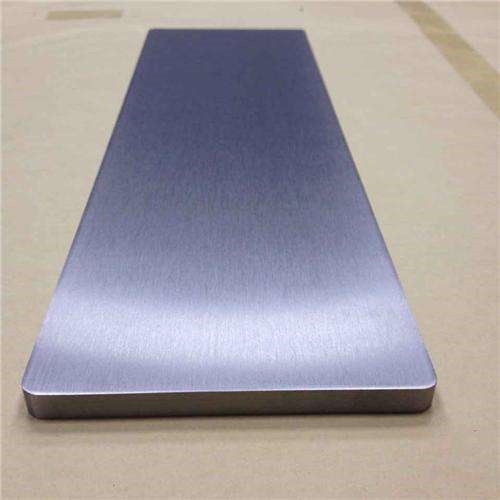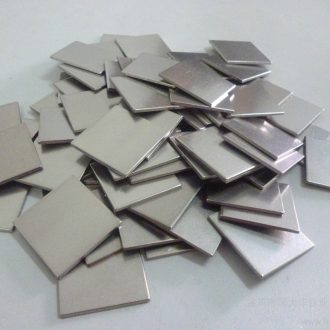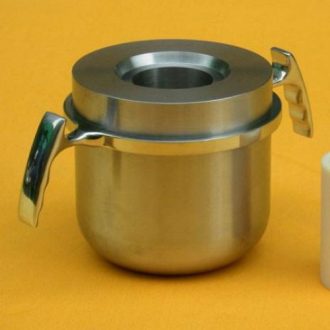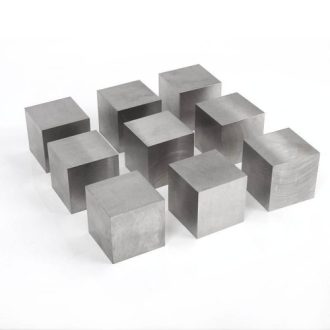Tungsten Alloy Plate
Properties of tungsten alloy ( AMS-T-21014 )
|
Class |
Nominal tungsten (weight percent) | Density (g/cc) |
Hardness ( HRC )(maximum) |
|
1 |
90 | 16.85 – 17.25 |
32 |
|
2 |
92.5 | 17.15– 17.85 |
33 |
|
3 |
95 | 17.75– 18.35 |
34 |
|
4 |
97 | 18.25– 18.85 | 35 |
Tungsten Alloy Plate
Tungsten heavy alloys (WHAs) are tungsten alloys that typically contain 90 to 98 wt% W. The majority of commercially available tungsten alloys are two-phase. Most commercially available machinable tungsten alloys have a two-phase structure, with the main phase being almost pure tungsten combined with a bond containing transition metals and dissolved tungsten. The basic properties of WHAs therefore derive from the properties of the main tungsten phase, which provides high density and high elastic stiffness. It is these two properties that have given rise to this range of material applications.
The most satisfactory current use of WHAs for most applications is the W-Ni-Fe system. For example, 90WNiFe and 95WNilFe represent common compositions. The addition of cobalt to W-Ni-Fe is a common method of slightly increasing strength and ductility. The presence of cobalt provides solid solution strengthening of the binder and slightly increases the interfacial strength of the tungsten matrix. Cobalt additions of 5% to 15% of the nominal binder weight fraction are most common.
Current uses of tungsten alloys (WHAs) cover a wide range of consumer, industrial, and government applications, including:
Damping counterweights for computer disc drive heads
Balancing counterweights for commercial aircraft ailerons, helicopter rotors and guided missiles.
Kinetic energy armor-piercing rounds for defeating heavy armor
Fragmentation warheads
Radiation shielding, radioisotope containers and collimation holes for cancer treatment devices
High performance lead-free waterfowl hunting guns.
Gyroscope components
Weight distribution adjustment for sailboats and racing cars.
Many applications require high weight densities for counterweights, inertial masses, or kinetic energy penetrators, or high radiographic densities for radiation shielding and collimation, and therefore require fairly large volume shapes. Based on high cost, this requirement rules out all but a few candidate alloys, often reducing the choice of very dense alloys to tungsten- or uranium-based materials.
Advantages of Tungsten Alloy Sheet:
-High density.
-Excellent mechanical properties such as high damping capacity and high Young’s modulus.
-Excellent radiation shielding properties
-High thermal conductivity and low coefficient of thermal expansion
-Higher high temperature strength and thermal shock resistance
-High oxidation and corrosion resistance
**We offer tungsten based alloys in customized dimensions and properties.
Table 1. Properties of tungsten alloy ( AMS-T-21014 )
| Class | Nominal tungsten (weight percent) | Density (g/cc) | Hardness ( HRC )(maximum) |
| 1 | 90 | 16.85 – 17.25 | 32 |
| 2 | 92.5 | 17.15– 17.85 | 33 |
| 3 | 95 | 17.75– 18.35 | 34 |
| 4 | 97 | 18.25– 18.85 | 35 |
Table 2. Mechanical Properties – Minimum Value ( AMS-T-21014 )
| Class | Ultimate tensile strength ( ksi) | Yield strength at 0.2percent offset (ksi) | Elongation( percent ) |
| 1 | 110 | 75 | 5 |
| 2 | 110 | 75 | 5 |
| 3 | 105 | 75 | 3 |
| 4 | 100 | 75 | 2 |
CONTACT US NOW TO GET LATEST TUNGSTEN ALLOY PRICE!
LATEST RECOMMENDED
GET A QUOTE
Send us an Inquiry now to find out more Information and the latest prices,thanks!
Hubei Fotma Machinery Co. Ltd.
Wechat / Whatsapp / Mobile:
+86 13995656368, +86 13907199894
Tel: +86-27-67845266
Email: bunny@fotma.com, export@fotma.com
Address: Guanggu Avenue 52#, Hongshan, Wuhan,
Hubei province, P.R.China. 430074
